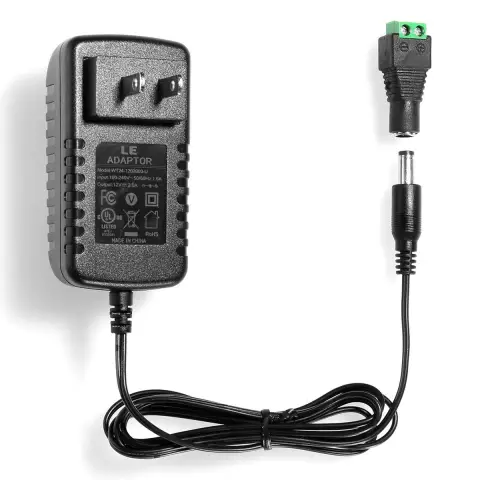Power adapters are pulse and transformer. The latter are simple in the device and are available for home repair. Especially when there is no desire to buy a new power supply.
Necessary
multimeter (ohmmeter); - Phillips screwdriver; - low power soldering iron; - spare parts and details
Instructions
Step 1
Check if the indicator on the adapter case is working. If the LED is on, start troubleshooting with the continuity of the wire through which the electric current enters the power supply. To test a wire, measure its resistance. A faulty wire will have infinite resistance. To connect the leads of the multimeter to both ends of the wire without breaking the insulation, use sewing needles or special needle-leads of an ohmmeter. Replace the defective wire with a new one.
Step 2
If the indicator is off, disassemble the adapter. In doing so, you will see that it consists of a transformer and an electronic circuit. The transformer lowers the mains voltage from 220 V to approximately the required value. The electronic circuit rectifies the electric current from AC to DC and stabilizes the voltage to an exact value.
Step 3
Typical transformer breakdowns are burnout or breakage of the primary or secondary winding. Since most adapters are made in China and save on quality wires, check the transformer first. To do this, take a multimeter and measure the resistance of both windings. You can measure the resistance of the primary winding through the contacts of the mains plug without disassembling the transformer. The resistance of the primary winding should be several thousand Ohms (several kOhms), the resistance of the secondary winding should be several tens of Ohms. If the winding is defective, it should be rewound using a similar new wire.
Step 4
When checking the transformer, do not touch live parts with your hands. The contact terminals can only be touched by the terminals of the multimeter. Violation of this rule will not harm your health, but the ohmmeter readings will be incorrect. Be sure to disconnect the leads going to the electronic circuit before measuring the resistance, as it will also affect the results obtained.
Step 5
After disassembling the transformer, find the diode bridge. It is designed to rectify the electric current flowing through the secondary winding. Check each diode in turn by measuring its resistance. In this case, it is not required to solder it. A faulty diode will have very low or no resistance. Serviceable - very large, tending to infinity. Replace the broken diode with a new one.
Step 6
Examine the electronic circuit of the transformer carefully. Determine the faults of its elements by darkening around radio components, cracks and chips on their cases, swelling of capacitors. Carefully solder the broken parts, look at the designation on the case, purchase exactly the same ones and install new ones. When replacing a capacitor, it is advisable to put a new one with a slightly larger capacity, and when soldering it, pay attention to the polarity of its inclusion.
Step 7
If the stabilizer malfunctions, remember, sketch or photograph its location on the microcircuit. A new part must be installed knowing the purpose and observing the location of the stabilizer terminals. A drawing or photograph taken in time will help you to correctly solder a new part without going into such complex details.






